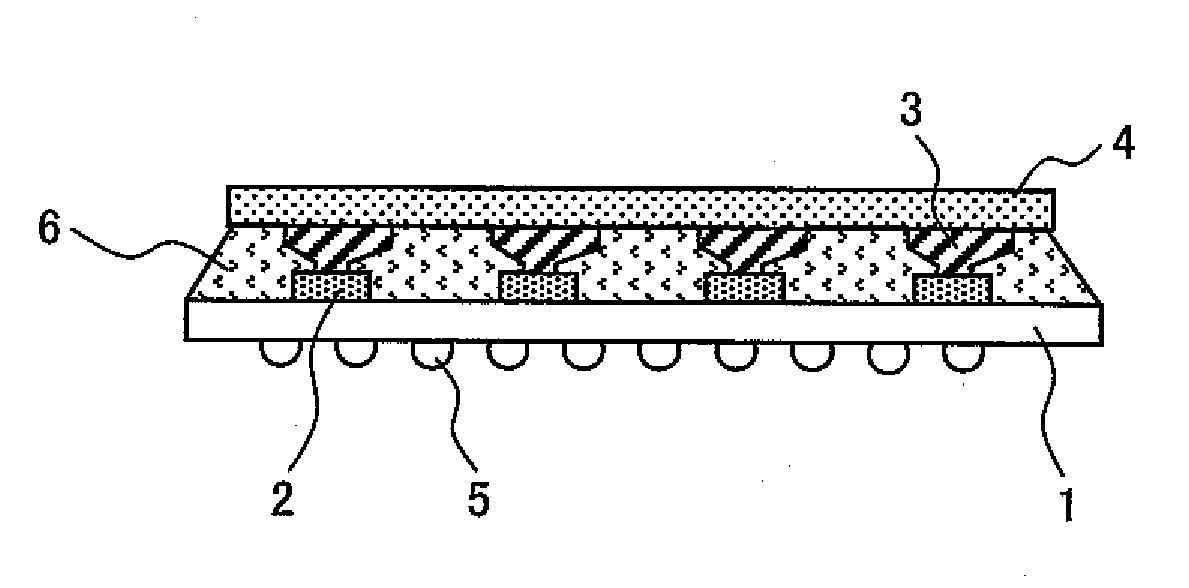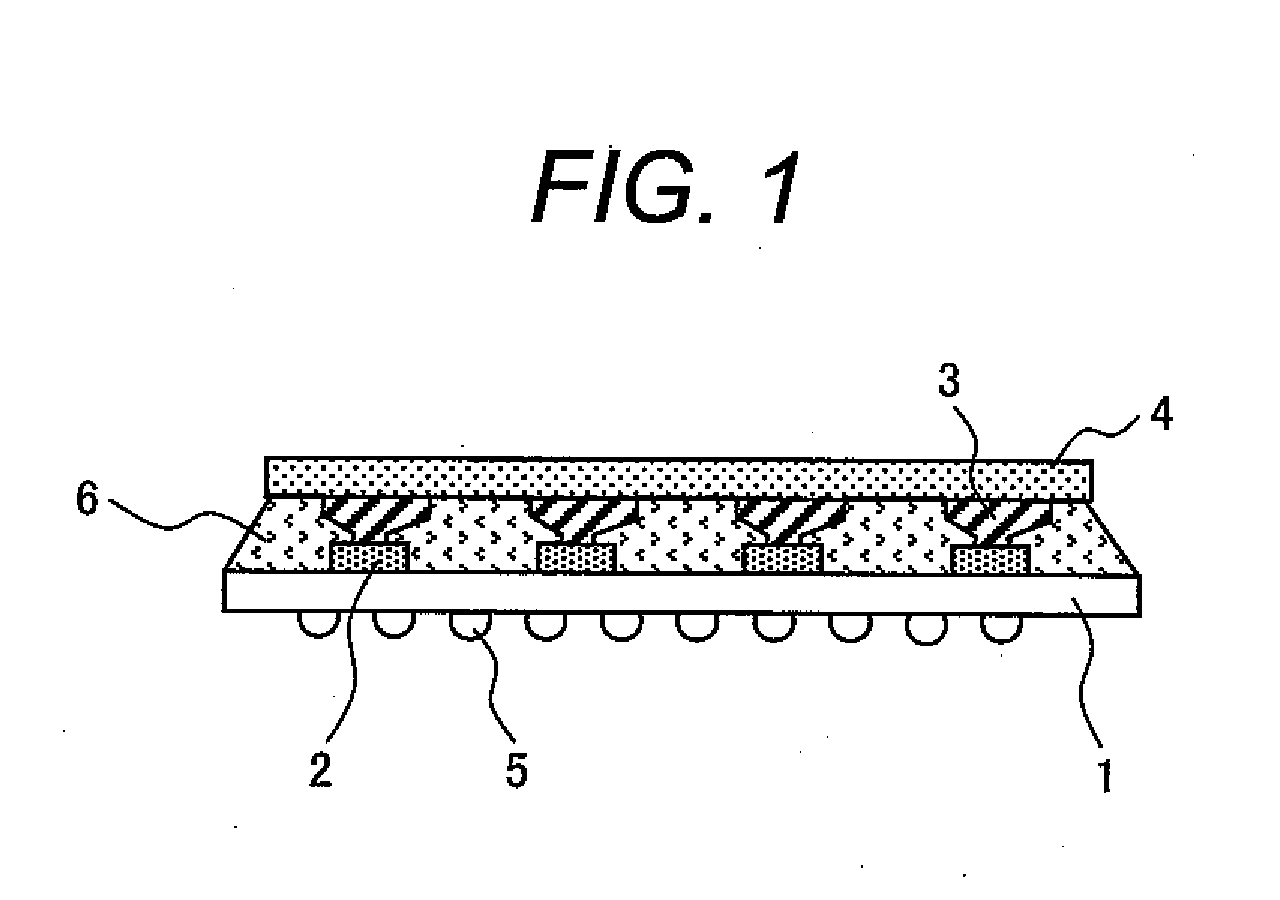Biomass-derived epoxy compound and manufacturing method thereof
- Summary
- Abstract
- Description
- Claims
- Application Information
AI Technical Summary
Benefits of technology
Problems solved by technology
Method used
Image
Examples
example 1
[0104]In a 2-liter four-neck flask equipped with stirring blades, a condenser and a thermometer were placed 100 grams of a low-molecular-weight lignin and 300 grams of a 10% aqueous tetramethylammonium hydroxide solution, followed by stirring for 30 minutes to give a solution.
[0105]The solution was further combined with 300 grams of epichlorohydrin, and the mixture was heated under reflux on an oil bath at 120° C. for one hour. The reaction mixture was cooled to room temperature, placed in a separating funnel, and washed with pure water until the oil layer became neutral.
[0106]After removing water therefrom, the residue was combined with 50 grams of a 20% aqueous tetramethylammonium hydroxide solution and heated under reflux at 120° C. for one hour, followed by washing with water.
[0107]This was placed in a rotary evaporator, from which about 80% of epichlorohydrin, water and by-products were evaporated and removed, the residue was placed in 2 liters of ethyl alcohol and thereby yiel...
example 2
[0112]An epoxidized low-molecular-weight lignin EL2 was prepared through synthesis by the procedure of Example 1, except for using an aqueous tetraethylammonium hydroxide solution having a pH of 12.6. EL2 was prepared in a yield of 104 grams, had a weight-average molecular weight Mw′ of 2590, and was soluble in 2MOE. The introduction of epoxy groups into lignin was confirmed through 1H-NMR and FT-IR analyses.
example 3
[0113]An epoxidized low-molecular-weight lignin EL3 was prepared through synthesis by the procedure of Example 1, except for using an aqueous potassium carbonate solution having a pH of 11.6. EL3 was prepared in a yield of 110 grams, had a weight-average molecular weight Mw′ of 2900, and was soluble in 2MOE. The introduction of epoxy groups into lignin was confirmed through 1H-NMR and FT-IR analyses.
PUM
| Property | Measurement | Unit |
|---|---|---|
| Percent by mass | aaaaa | aaaaa |
| Acidity | aaaaa | aaaaa |
| Concentration | aaaaa | aaaaa |
Abstract
Description
Claims
Application Information
 Login to View More
Login to View More - R&D
- Intellectual Property
- Life Sciences
- Materials
- Tech Scout
- Unparalleled Data Quality
- Higher Quality Content
- 60% Fewer Hallucinations
Browse by: Latest US Patents, China's latest patents, Technical Efficacy Thesaurus, Application Domain, Technology Topic, Popular Technical Reports.
© 2025 PatSnap. All rights reserved.Legal|Privacy policy|Modern Slavery Act Transparency Statement|Sitemap|About US| Contact US: help@patsnap.com


